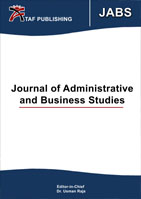
|
Abstract
This paper studies the consequences of income inequality on life quality in a subset of selected countries. Specifically, I examine the impact of (log) GDP per capita and the Gini coefficient of income inequality on a set of life quality indicators. This paper relies on the data from the World Bank, which provides statistics for almost all the information that is required for inequality and other measures of living standards for different countries around the world. The data was collected from 2010, as it gives the best trade-off between being the most recent and not having too much missing data. First, both life expectancy and infant mortality are improved when there is less inequality, and the country is wealthier. Second, the effect on crime statistics is more mixed. While theft increases with GDP per capita, the inequality does not seem to play a role; conversely, homicide increases in inequality but remains unaffected by GDP. Results indicate that the influence of Gini co-efficient and log GDP per capita may vary among different categories of crime. The R-squared shows that the two factors could only explain 35.7% of changes in the homicide rate. Plausible explanations for these empirical observations are offered throughout the paper. The unavailability of data could also be a factor that influences the final results, particularly for Gini co-efficient; out of the 216 existing countries, I only gather the full set of data for 84 of them. Therefore, access to more data could further improve my results. |